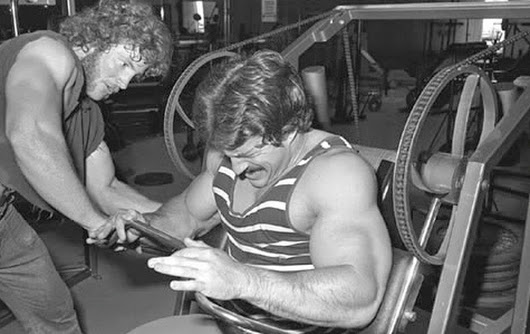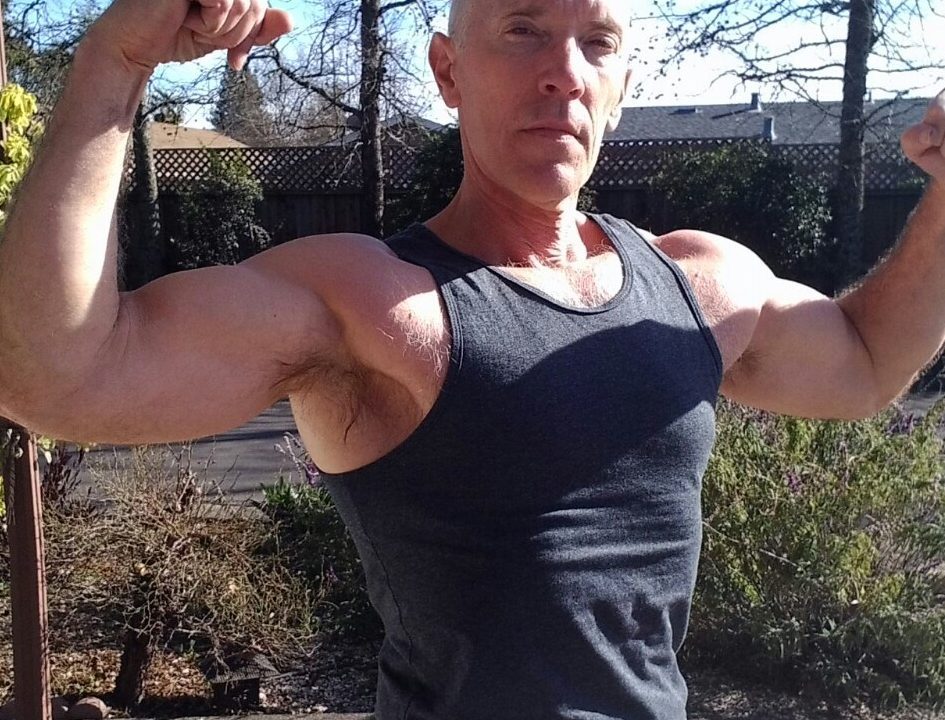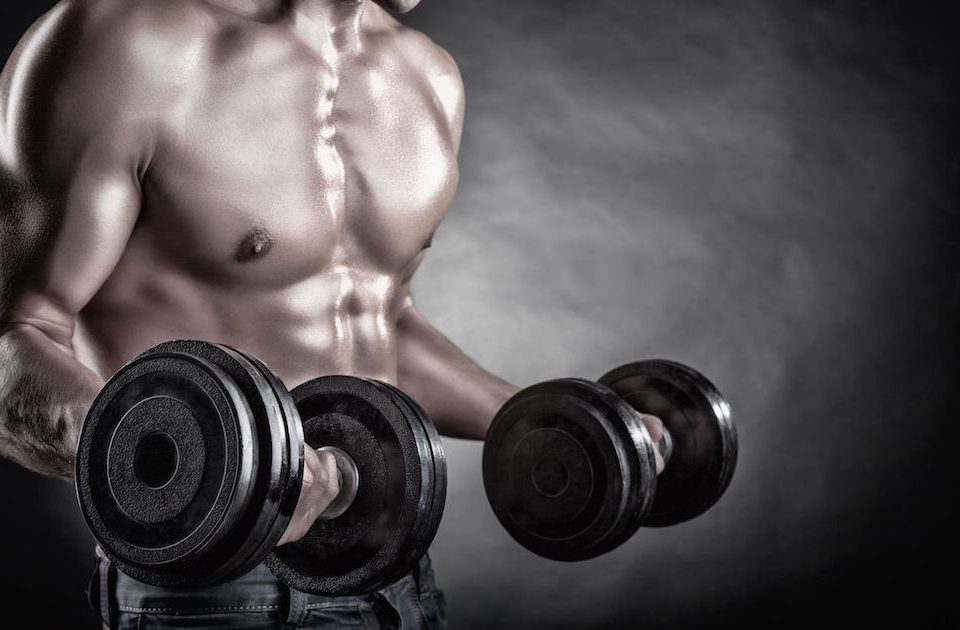Ever since Dr. Kenneth Cooper introduced the concept of aerobics, we’ve been conditioned to believe that steady-state exercise at a moderate pace is the best, perhaps only, way to increase cardiorespiratory fitness. Jogging, treadmills, and the like, done for 30 minutes or more at a time, have been deemed best. So, lots of people have spent countless hours doing these things, but it increasingly looks like they spent lots more time than they need have. The question is, why are you still jogging?
High-intensity interval training is better than aerobics, and much faster than jogging or other aerobic exercise. It’s simply more efficient.
High-intensity interval training
High-intensity interval training (I wrote about it here), abbreviated HIIT (or HIT), uses the intensity of exercise as the most important variable. Instead of steady-state, moderate-intensity exercise, HIIT has you going all-out for brief periods of time, followed by a short rest period, then another brief, all-out bout, and so on. While the exercise done in HIIT is much more intense, it’s also much shorter in time.
It’s been known for some time that HIIT is effective at increasing fitness, but what we would like to know is how it compares to moderate-intensity, steady-state exercise in that regard. Does it increase fitness as much?
To answer that, a group led by Martin Gibala, the exercise physiologist whose name has become linked to high-intensity exercise, studied a group of young, sedentary men.
Half the men did sprint-cycle interval training, consisting of three 20-second all out bouts of stationary cycling, interspersed with two minutes of low-intensity cycling.
Half the men did moderate-intensity cycling at 70% of their maximum heart rate, for 45 minutes.
Both groups worked out 3 times a week for 12 weeks.
According to standard exercise dogma, the moderate-intensity cyclists should have improved their fitness more. After all, they were doing aerobics (“cardio”), the HIIT exercisers were doing mainly anaerobic training, and took a lot less time.
Results
- Peak oxygen uptake, a direct measure of cardiorespiratory fitness, increased 19% in both groups.
- Insulin sensitivity increased similarly in both groups, 4.9 in HIIT, 5.0 in moderate-intensity (no significant difference).
- Muscle mitochondrial content increased similarly in both groups.
The high-intensity group worked out a total of one minute per session, 3 x 20 seconds, with a total time commitment of 10 minutes per session when warm-up and time between all-out bouts are included. The moderate-intensity group worked out 45 minutes, or 50 minutes with warm-up and cool-down periods.
No more time excuse
The number one reason people give for not exercising is lack of time. This study shows that in less than 30 minutes a week, you can get in great shape. The aerobic, moderate-intensity group spent 2.5 hours a week to get the same results.
If you make your warm-up and cool-down periods shorter, as well as the intervals between bouts, you could get in shape in probably 15 minutes a week.
It’s intense
High-intensity interval training is intense. You have to give it everything you’ve got in those 3, 20 second intervals. For that reason, some people find it unpleasant.
Personally, I don’t find it unpleasant at all. However, I do enjoy walking as a form of low-intensity exercise. if you want to, you could certainly do both. Just keep in mind that if you do both, walking doesn’t generate the kind of intensity that increases the 3 indices of fitness: peak oxygen uptake, insulin sensitivity, and muscle mitochondria. You need to get over a threshold of intensity before that happens.
Aerobics dogma overturned
This study, along with others of a similar nature, shows you don’t need long hours of exercise to increase cardiorespiratory fitness. I think it also shows that, just as with lifting weights, intensity is the most important exercise variable.
Not volume. Intensity.
Exercise intensity lies on a continuum, from low (walking) to middle (jogging) to high (high-intensity intervals). Getting more fit depends on exceeding an intensity that makes your body work harder than it’s used to.
If you exercise with low to medium intensity, and become fitter, the only ways to increase your fitness are a) increase the amount of time exercising, or b) increase the intensity. Most people choose an increase in time, and some who want to get very fit end up spending hours and hours a week exercising. That’s not necessary. In HIIT, you are always working at the threshold of your physiological ability. So long as you exert the utmost effort when you do it, you will always be getting fitter without an increase in exercise time.
Overtraining
If you do another form of exercise, such as lifting weights, you should be aware that if you combine it with HIIT, it could be easy to get into a state of overtraining. I can attest to this myself. HIIT workouts ideally ought to be treated as a separate workout, separated from another by at least a day. Too much exercise isn’t healthy and your enjoyment of the rest of your life will decline due to fatigue. Of course, the amount of training an individual can handle varies based on age, current condition, diet, sleep, and other factors.
The exercise of the future?
Ever since the concept of aerobics came about, we’ve been stuck in a paradigm that the only way to increase fitness and decrease the risk of disease, especially heart disease, is to exercise aerobically. Is it a coincidence that the rise of aerobics coincides with the rise of the obesity epidemic? I don’t think it is a coincidence, although obviously other factors are involved.
Now that we know that long hours of plodding are not necessary for fitness and for protection against heart attacks, HIIT could be the wave of the future.
I’ve already embraced it thoroughly – and I used to be a distance runner.
A chapter in my book Muscle Up describes high-intensity training and details a number of high-intensity routines.
















15 Comments
That’s pretty amazing. Thanks for bringing it up. I’ll be pointing joggers I know to it.
My ideal training schedule is legs & abs Tue, upper body Fri, and HIIT on Sun. My HIIT routine is 30 minutes of 45/45 seconds on the elliptical machine. I believe I go as hard as I can with both arms and legs, and my pulse gets up over 90% of theoretical maximum. (Measuring it manually ASAP after the intensive intervals.)
I’d love to do more whole-body HIIT, but my schedule means that my upper body is still somewhat sore on those days. They’ve put in a jungle gym: https://www.lifefitness.de/facility/products/synrgy360 . Looks like fun. Or just a combination of burpees and jumping jacks or something.
TOPIC DRIFT…Where are you at with fasted/fed training these days? In the last month or two, I’ve started doing it fasted, after thinking about it for a year. I believe it works for me, though the first few exercises seem harder. But once I really get going, I THINK I work out as well as when lightly fed. I start sipping my whey shake after I do my chest & shoulders, before my arms, just because I’m paranoid about burning muscle tissue.
Sadly, I’ve been off training for a couple of weeks now due to the flu. And now I’ve got some sinus trouble. Annoying as heck. Winter blows.
Hi Nick. I do fasted training often, maybe half the time.
I think that the biggest obstacle to people changing their mindset on exercise is their desire to “burn” fat through exercise, which causes them to do it for too long (or paradoxically, too little because they think it is too much of an investment of time and energy). The first reaction for the vast majority of the population when they want to lose weight is to exercise, which is an extremely low-leverage action for fat loss.
I encourage people to *completely* forget about exercise if their goal is to lose fat. Exercise is still very desirable for increasing our strength, conditioning, etc. For these goals, I’m a big believer that High Intensity Interval Training or High Intensity Training is better than exercising at lower intensity levels. But then you need to allow yourself adequate recovery. Exercise is a stress that we put on our bodies and is inflammatory. That’s why endurance athletes often develop CVD. We need to allow our bodies time to reduce the inflammation.
One thing that should be clarified for your readers is that High Intensity Interval Training (e.g. Martin Gibbala) and High Intensity Training (e.g. Arthur Jones, Drew Baye, Mike Mentzer, Doug McGuff, etc.) are very different things. That is one reason that I avoid using the acronym HIT to refer to High Intensity Interval Training. I always use HIIT to avoid confusion.
I don’t disagree with this post, but would rise to the benefit of longer, steady-state cardio. I do run (jogging) sometimes as much as five days a week, but I realize it’s not for weight loss. As I think Ed Lattimore has said, running is more about the mind than the body.
I have tried HIIT in the form of Crossfit (or functional training type classes), and liked it, but did not get the same mental side effects that I get with running. I feel mentally much sharper on days that I run. Also, I obviously can’t argue the science, but I feel subjectively like it’s harder to get to a state of overtraining with cardio.
In effect, I guess I’m saying that longer, steady-state cardio does have benefits, although perhaps not in fat loss.
Great article Dennis. My main focus is my 2 x HIT weights workouts per week and although I really wanted to add in HIIT, the 8x 30secs of Tabata training once per week was clearly impacting my progression in the weights so unfortunately I had to drop it last summer. I heard about Martin Gibbala recently and added in his 3 (or 4) x 20 secs sprints (with 30 secs rest in between) once per week and bingo, this seems to fit well into my schedule, still allowing me to progress in the weights each week. It is certainly the case that if you push yourself as hard as you can then 3 or 4 x 20 secs sprints is about as much as I can take!
“…The exercise of the future?…”
What’s interesting is NASA studied the exact same thing for the space program. There was book written about it, maybe 1969???, I remember reading it and marveling that you could exercise so quickly and get the same benefits. I can’t remember the name. I was very young at the time but have always been a book worm.
I also believe the Canadians came to the same conclusion in WWII. They produced a exercise program for pilots to use in somewhat confined spaces. It’s HIT too but I think slightly less strenuous. Search for “5BX Plan” and there’s lots of info and free copies.
I believe that you also need to stretch and use all the movement of the body. I have no financial interest in this book but I really like it. ”
Miss Craig’s 21-Day Shape-Up Program for Men and Women: A Plan of Natural Movement Exercises for Anyone in Search of a Trim and Healthy Body”. It’s an old book and you can get used copies cheap. I think the reason these work is it’s my understanding that the lymph nodes that eliminate waste use movement of the body to pump the waste out. The exercise in Miss Craig’s book takes about 30 minutes a day after you memorize it.
Hi Sam, yes the SBX from the Royal Canadian Air Force. Plan tales a few minutes a day. M
Hi P.D.
What is your opinion about GABA?
I’d like to take it to help me with my sleep.
It seems that even though it SHOUDN’T work cause it doesn’t cross the blood brain barrier, some people say it works.
It also should help to increase muscle mass.
Any concern?
Thank you.
Hi Marco, if you want to increase GABA, try theanine. Definitely works against anxiety. However, I’ve tried it for sleep and it didn’t seem to do a lot. Also, try magnesium for sleep too.
Thank you for your reply, P.D.
I have a bit worried by the GABA (or maybe also theanine) effect of raising G.H.
Could artificially increasing G.H. via supplements be dangerous for cancer incidence or so?
Thanks again.
Hi Marco, I’m not aware of any connection between GABA and cancer. Theanine, for example, improves health.
Great post. Have you ever tried kettlebell swinging before? Seems like an ideal way to do HIT.
Thanks, Michael. My own experience with kettlebells is limited, but I agree it would make a good HIT workout.